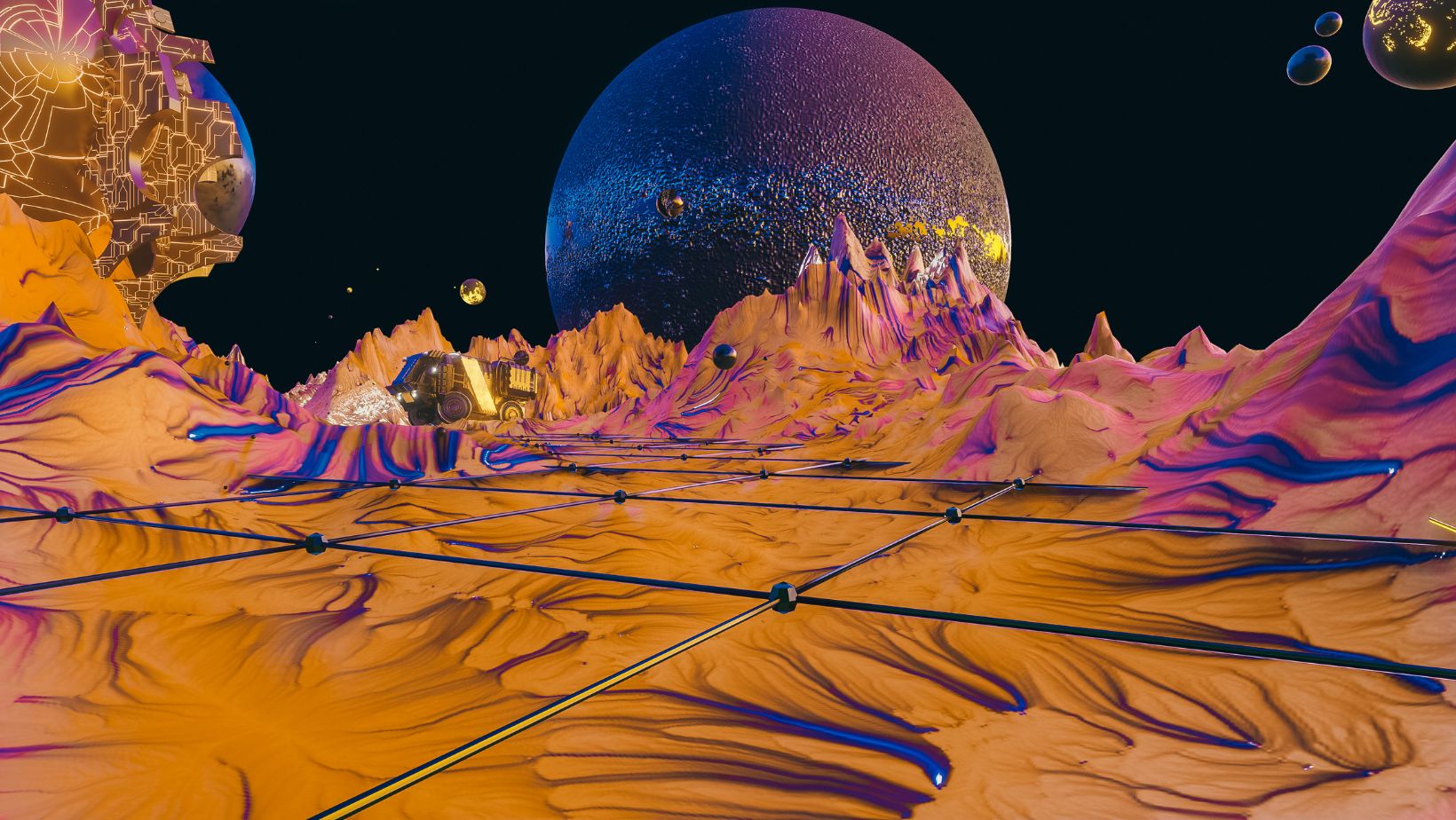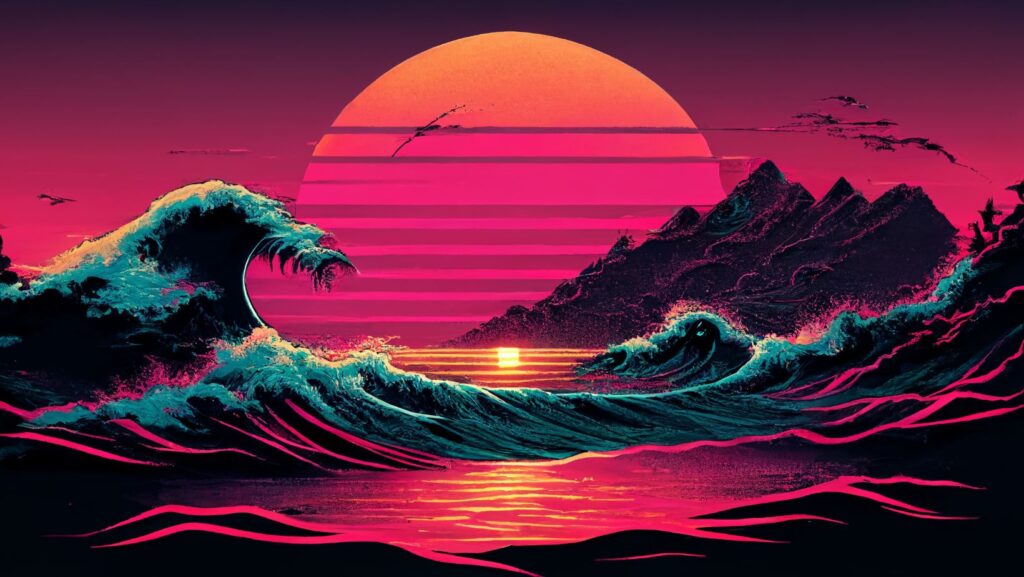Let’s take a trip down memory lane, all the way back to the vibrant and imaginative world of 80s fantasy art. It was a time when artists broke away from the traditional rules, letting their creativity run wild and free. The result? A unique genre of art that still captivates us today.
80s Fantasy Art
 First off, the color scheme in these artworks leans towards bright, vibrant hues. Neon colors, made popular in the 80s, frequently feature in these art pieces, marking a strong departure from the muted, earthy tones typical of fantasy art in previous eras.
First off, the color scheme in these artworks leans towards bright, vibrant hues. Neon colors, made popular in the 80s, frequently feature in these art pieces, marking a strong departure from the muted, earthy tones typical of fantasy art in previous eras.
Then, there’s the prevalence of the airbrush technique. Artists like Boris Vallejo and Michael Whelan employed this tool to achieve smooth, nearly surreal gradations of color, enhancing the luminosity and depth of their compositions. This technique fostered a distinct aesthetic, trademark to 80s fantasy art.
Above all, it’s the sense of boundless imagination that cements 80s fantasy art’s indelible impact. This art form shirks reality’s constraints, inviting viewers on a whimsical voyage into far-fetched realms and vivid alternate universes. Essentially, as evident in successful fantasy art prints, 80s fantasy art transcends mere decoration. It opens windows to worlds where the only limit—one’s own imagination.
The Rise of 80s Fantasy Art
 Distinctive factors led to the rise of this unique genre during the 80s. Firstly, the boom of popular culture played a crucial role. Blockbusters like ‘Star Wars,’ ‘Indiana Jones,’ and ‘The Dark Crystal’ brought fantasy from the fringes to the mainstream. Suddenly, a whole new universe of imaginative and fantastical elements was made accessible to the masses.
Distinctive factors led to the rise of this unique genre during the 80s. Firstly, the boom of popular culture played a crucial role. Blockbusters like ‘Star Wars,’ ‘Indiana Jones,’ and ‘The Dark Crystal’ brought fantasy from the fringes to the mainstream. Suddenly, a whole new universe of imaginative and fantastical elements was made accessible to the masses.
Secondly, the emergence of role-playing games such as ‘Dungeons & Dragons’ further enticed the public. The game’s elaborative and evocative illustrations pushed the boundaries of traditional art. Artists adopted this progressive form, imbuing their work with surreal landscapes and mystical creatures, further amplifying the appeal.
Thirdly, the extensive use of airbrush techniques garnered attention. Propelled by the desires to emulate a dream-like quality, artists like Boris Vallejo and Michael Whelan extensively utilized airbrush, lending a smooth blending effect to their art.
80s Fantasy Art in Popular Culture
 Expanding on the cultural influence of 80s fantasy art, it’s instrumental to note its sheer reach. At its zenith, this art form seeped into every corner of popular culture. From sci-fi films to comic book covers, album art to video game designs – 80s fantasy art found a home everywhere.
Expanding on the cultural influence of 80s fantasy art, it’s instrumental to note its sheer reach. At its zenith, this art form seeped into every corner of popular culture. From sci-fi films to comic book covers, album art to video game designs – 80s fantasy art found a home everywhere.
Movies adopted 80s fantasy art in a significant way. Discernible influences can be seen in notable films like ‘Labyrinth’ and ‘Legend,’ both noted for their fantastical landscapes and eccentric characters. Similarly, TV series, such as ‘Masters of the Universe,’ employed elements of 80s fantasy art in their animations, contributing to their whimsical allure.
Moving on to the music industry, many album covers of popular bands resonated with the aesthetic of this art form. For instance, Iron Maiden’s ‘Powerslave,’ Molly Hatchet’s ‘Flirtin’ with Disaster,’ and Meat Loaf’s ‘Bat Out Of Hell II: Back into Hell’ sported vibrant, imaginative cover art that unmistakably mirrored the 80s fantasy art style.
Collecting 80s Fantasy Art
So there you have it. 80s fantasy art’s impact is undeniable. It’s more than just a vibrant splash of neon on a canvas or a dramatic scene on a movie poster. It’s a cultural phenomenon that broke boundaries and reshaped our visual landscape. It’s a testament to the power of imagination, where dragons soared and heroes emerged from the most unlikely places. Today, it continues to captivate us, reminding us of a time when anything seemed possible. Whether you’re a nostalgic fan or a new admirer, collecting 80s fantasy art is a wonderful way to appreciate this incredible era. Its influence remains alive and well, proving that true art, no matter the decade, always finds a way to resonate with us. So why not start your own collection? After all, who wouldn’t want a piece of that magic?

